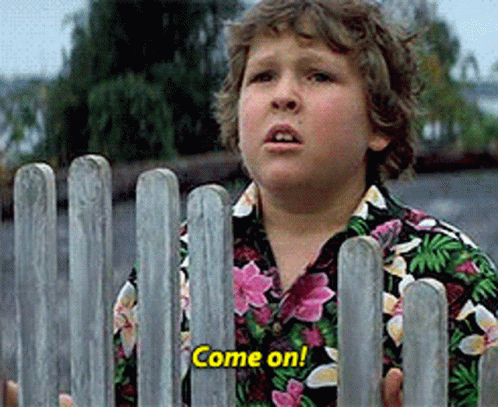PART I: The RUMBLE
Nov. 6th, 1959. A blue sky over Braddock. Reflected in the Monongahela, that clean, bright blue seemed like a miracle. Nearly four months into a nationwide steel strike, the soot-free sky hadn’t lost its novelty. On porches people read the paper. The Braddock Free Press came twice weekly and offered the comfortable texture of small town life: bake sales, Boy Scouts, advice for weatherproofing homes. And football. All through fall, football. Friday was game day in Braddock and the paper carried full pre-game coverage. Was John Gay going to have another breakout performance? Would Klausing keep the unbelievable streak alive? That Friday, the Braddock High Tigers were playing North Braddock Scott, their biggest rival. There were more significant headlines—a Supreme Court decision loomed, one that would have huge implications for the region’s striking steelworkers—but those stories had nowhere near the urgency of that night’s matchup. Football held the town’s attention.
For out-of-work steel men four months off the job, routine was the thing. With unfinished newspapers tucked underarm, they descended the town’s slope toward Braddock Avenue. They waved to neighbors along the way. Most of the men in the neighborhood—few women worked the mills in those days—were middle-tiered workers, sons of immigrants who’d spent their lives earning their hillside perches. Their one- and two-story houses, brick and aluminum-faced, were well maintained. The homes were not big, but they were dignified, exuding a sense of achievement. In almost every case, the people who owned them had grown up in conditions less favorable. American flags luffed in the breeze. Banners and homemade signs, tokens of solidarity, hung in windows and on railings: Back Your Union! American Workers Unite! Steel Strike is On! The bite of these words, which months before had made men bristle, seemed diminished.
The strike had changed the flow of time. More than 500,000 workers had walked off the job on July 15 and overnight America’s industrial activity ground to a halt. It was the largest work stoppage in the nation’s history. Steel production, America’s marquee industry, fell silent. Workers waited for U.S. Steel’s quick surrender, for the other companies to follow suit. A 1956 strike had resulted in record pensions and wages. Why shouldn’t another strike bring the same windfall? Families sang defiant songs and met one another for potluck dinners, a nostalgic fraternity that recalled ’56.
Only this time the steel companies didn’t seem eager to make a deal. Without salaries, workers grew uneasy. Summer’s momentum stopped right along with the slab rollers and blast furnaces, as though the cycles of nature were linked to American production. When fall finally arrived, the stoppage seemed years old. Families were eating donated food out of cans. The union helped where it could, but with little money saved and dues inconsistently collected, it could intervene in only the most dire circumstances.
Most of Braddock’s steel men held posts at the Edgar Thomson Works. A U.S. Steel plant, Edgar Thomson had been Carnegie’s first large-scale mill, the linchpin of his massive empire and the catalyst for what would become the dominant industry of the early 20th century. Since its first molten batch in 1875, the mill had rarely been silent. It rumbled day and night, rumbled through the ground as workers started their shifts and rumbled in the air after quitting time. The din had become part of life, as familiar as any landmark. It was a constant, audible record of the town’s past and a soothing assurance of its future. Now the mill’s silence made Braddock feel strange, foreign even to those who had never lived elsewhere.
PART II: THE PEP RALLY
Lost in thought, men rounded the long downhill corner toward the center of town. At least one thing was the same. Braddock Avenue teemed with people. With Braddock High’s undefeated record at stake, residents seemed to have shaken their doldrums. Sports Illustrated had published a story about the team on Nov. 2, just four days earlier. It was a rare honor for a high school team and a boost for a town in the throes of uncertainty.
The avenue was a shopper’s delight. The Famous, a five-story department store, sold clothes, toys and household goods—all of it modeled by the happiest mannequins, the friendliest looking cardboard cutouts that had ever vacuumed a rug or tended a grill. Inside, as if to accentuate the state-of-the-art décor, a network of pneumatic tubes sent money and backroom orders flying high overhead. For many small children, their necks craned back, these whooshing, Space Age tubes were the highlight of otherwise tedious excursions with their parents.
[quote position="left" is_quote="true"]The air above Braddock was electric. Crowds persisted all day. The injection of young revelers gave the streets renewed verve. School was over, which meant game time was nearing.[/quote]
For children who managed to escape, however, the afternoon became a blur of color. Packs of boys swarmed down the street. Trolleys on the old 55 line clanged along Braddock Avenue as they shuttled people from one end of town to another. Children latched onto the backs of the trolley cars, and conductors, overworked and overwhelmed, gave up trying to shout them down. The boys jumped off after a time, their attention piqued by the shiny hard shells of the latest cars in the town’s showrooms.
The dealership at the end of town was a favorite, a huge brick building with concrete ramps and a thousand places to hide. If a kid kept cool, didn’t attract attention, he could get to the rooftop display. There, three stories up, he could look out over the town, could peer down at the swell of people and gaze across the street into the frowning maw of Edgar Thomson. A kid was a king on that rooftop, until a salesman, sensing there was fun afoot, pumped his fists and gave chase. Then it was down the ramp, over the railing, and back onto Braddock Avenue, where waiting friends, laughing and running wild, hooted their congratulations, the whole pack slipping gaily into the crowd.
President Eisenhower, nearing the end of his second term, had taken notice of the strike. Steel was the lifeblood of American industry. Automakers, for example, operated lockstep with the steel companies. With the mills silent, tens of thousands of autoworkers were in limbo. As the strike continued, Eisenhower began to contemplate drastic action. The Taft-Hartley Act, a federal law that passed the Senate in 1947, gave the government enormous power over the activities of labor unions. Among other things, it allowed the president to order strikers back to work if their actions contributed to a national state of emergency.
More than two months into the strike, the Department of Justice petitioned for a Taft-Hartley injunction. Against a wall, the union’s only option was to challenge the constitutionality of Taft-Hartley itself. They lost their challenge in district court but adjudicators stayed the injunction until higher courts could weigh in. The 3rd Circuit Court of Appeals again upheld the government injunction on Oct. 27. On Nov. 3, the United States Supreme Court heard arguments for and against the constitutionality of Taft-Hartley. Workers around the country awaited their decision.
For reasons that had nothing to do with Eisenhower, Taft-Hartley, or the Supreme Court, the air above Braddock was electric. Crowds persisted all day. When a pep rally let out, those students who hadn’t ditched joined the merriment. The injection of young revelers gave the streets renewed verve. School was over, which meant game time was nearing.
At 3:30, fresh from a pep rally, the Tigers walked out of Braddock High. Dressed in street clothes, falling in behind their celebrated coach, the players showcased a well-earned swagger. They’d won 53 straight games, besting the previous national record of 51. Fans, drunk on atmosphere, shouted their good wishes.
Braddock fans began their march into North Braddock, toward Scott High, well before sunset. Under the best circumstances, neighboring towns will have some manner of rivalry. Braddock and North Braddock did not live together under the best circumstances. Braddock hugged the polluted Monongahela and was home to a giant steel mill. North Braddock sprawled high on the slope above Braddock; it was wealthier and whiter. A set of train tracks separated the towns.
The rivalry, not surprisingly, spilled over into football, the mutual enmity made more intense by the fact that the teams shared a field. Braddock, with no stadium of its own, played its home games at North Braddock Scott High. Between 1915 and 1970 the schools played 29 times. During the ’31 game, a fistfight broke out between players and spectators and resulted in a 16-year hiatus. During each of Braddock’s five previous title runs, they’d needed to beat Scott to earn a place in the championship. They’d been successful each time, though some of the victories had been won on a prayer. A year earlier, in 1958, a last-minute field goalsaved the season. The ball actually hit the crossbar. It limply rolled over, falling into the hands of the referee waiting below. Now, once more, both teams were undefeated. The championship game was the prize.
PART III: The Game
As always on game day, Klausing’s boys took in a movie at The Paramount, a massive 632-seat theater in the heart of Braddock. They taped themselves right there in the lobby before walking to Braddock High to suit up. Marching from their school, the Braddock players heard Scott Stadium before they saw it. An estimated 10,000 fans roared inside a stadium built to hold 5,000. Outside, would-be spectators stood dozens thick and probed fences for points of weakness. Klausing and his players fought their way to the stadium’s entrance. Frightened security guards weighed their options. If they opened the gate to let the team through, every ticketless Joe in North Braddock would make a move. The head guard informed Klausing that he couldn’t let them in. Incredulous, the coach stared back. This was a bad start to an important game. Klausing, nonplussed, instructed his players to start climbing. He and his staff led the way. Football players in full pads scaled the gate. Safely on the other side, the team made its way to the field. Under the bright lights, North Braddock was already warming up.
Security was tight for a reason. There’d been a death threat against Coach Klausing. A week before the game, the stocky, kind-faced man had received a letter. It said if he showed up that Friday he’d be shot. “To prove we mean business,” the authors wrote, “we’re gonna smash your car this week.” Fans were rabid, Klausing knew, but not homicidal. He dismissed the letter as a prank. That is, until the Wednesday before the game. Returning from a banquet in Pittsburgh, the team’s bus pulled into Braddock High. A player pointed to Klausing’s car. The windows were broken, smashed to hell. The death threat suddenly seemed credible. Klausing went to see his father, mayor of nearby Wilmerding. The mayor arranged for two Wilmerding policemen to escort Klausing as bodyguards. They wore plainclothes.
Under the lights, North Braddock ran through warm-ups. Balls thudded off chilled hands and North Braddock players rubbed their palms together for warmth. Klausing kept his players seated for a few minutes. Then, calmly, he instructed them to get to their feet. Instead of sending them out for drills, he led his team along the sidelines. Beneath the expectant eyes of the crowd, the Tigers walked a slow lap. While North Braddock practiced punts and passes, Braddock took an unhurried walk—a victory lap before the game started. Moving in step, heads high and calm, they looked like champions.
This was the best Tigers squad Klausing had ever coached. He’d gone undefeated each of his last five seasons, but none of those teams, he believed, held a candle to these boys. His roster was deep with talent, all of it backed by experience. And unlike some all-star squads, these boys had discipline. After their lap, before the buzzing crowd, Klausing sent the boys to warm up. John “Doughboy” Gay, one of the best high school backs in the country, led the team in drills.
When warm-ups ended and anthems were dispensed, the game finally got underway. One thing was apparent after the opening kick: North Braddock wasn’t cowed by the hype. North Braddock’s defense looked good and an early threat by Braddock came to nothing. Braddock fans felt uneasy. They were used to seeing points on the board. High school games in the ’50s were typically low-scoring. Teams fought hard for points and games often turned on a single play. Braddock, though, regularly dispatched opponents by huge margins. Fans realized this wouldn’t be a regular game. Scott’s defense was rigid. Gay had a few brilliant runs, breaking for 15 or 20 yards. On ensuing plays, though, the heavy Scott line dug in and disrupted Klausing’s intricate blocking patterns. Frustrated, Braddock punted again and again.
When the ref blew the whistle for half time, North Braddock had the lead. The Tigers hadn’t looked sharp and Klausing knew it. The team’s fans were encouraging, but locals, many with money on the line, traded queasy looks in the stands.
It was not lost on the players that throughout the game, two men in street clothes had been following their coach. The officers stayed close to Klausing, alert for anyone brash enough to make good on the anonymous threat. Coach had forgotten all about it. His team wasn’t performing. For a coach who would eventually be inducted into eight separate halls of fame, there was little else to think about. As he jogged off the field, a man leapt out in front of him. He blocked the coach’s path and raised a dark object. The plainclothesmen on Klausing’s flank wrestled the man to the ground. Fans just above the fracas looked on in disbelief. The officers slapped handcuffs on the assailant and jerked him to his feet. It was only after a moment of confusion, the man pressed helplessly against the bleachers, that Klausing saw the microphone. It was a reporter known as “Sir Walter Raleigh.” His name was John Christian and he worked for WAMO, a radio station in Pittsburgh. He’d been looking for some halftime commentary.
PART IV: The Win
Braddock High returned to the fieldwith the confidence and poise of an unbeaten team. So did North Braddock. The Purple Raiders were playing inspired football and they kept the lead into the fourth quarter. By the closing minutes, the Tigers were down 12-9. Worse, North Braddock had the ball and was marching for what looked like a game-ending score. Klausing had to take chances. With North Braddock 25 yards out, he brought 10 players to the line. That left one defender to cover the pass. Klausing was gambling that with 10 men, his team could push North Braddock out of field goal range.
[quote position="left" is_quote="true"]The team’s fans were encouraging, but locals, many with money on the line, traded queasy looks in the stands.[/quote]
Players bore down and the North Braddock quarterback let the ball fly. It was a rushed pass thrown off balance. The ball sailed through the air and fans on both sides held their breath. The pass fell into the hands of the lone Braddock defender—an interception. The stadium erupted.
Great teams practice their two-minute drills religiously. How an offense performs with the clock winding down is imperative to its success. In a bad omen, the Braddock quarterback, John Jacobs, was promptly sacked on his own 9-yard line. Klausing had the best back in the region in John Gay, but with the clock ticking there was no time for the ground game. Jacobs was a talented quarterback and Klausing trusted him. The defense knew to watch for the pass and Jacobs had trouble locating a man. There are a few traits that all great coaches share. Among them is a willingness to deviate from a plan. Throwing long balls to a blocking end who could barely catch a cold is never a coach’s first idea. Klausing saw an opportunity, though. Ray Henderson was getting free in the flats.
Ray “Butch” Henderson had terrible hands. Klausing must have known before the game that drastic measures would be necessary. As the team was taping up in The Paramount earlier that afternoon, he’d told Henderson about a favorite trick of NFL receiving great Ray Berry. Berry wrapped his wrists each game, pulling the tape tight so it cut circulation to his fingers. Half asleep, his fingers relaxed. Relaxed fingers meant soft hands. Intrigued, Henderson had decided to wrap his own wrists.
The gimmick worked. Ray Henderson was suddenly Braddock’s go-to man. Butch quickly caught two passes for 35 yards. The crowd went wild as the boy dusted himself off. Jacobs made two more completions for gains, putting Braddock in Purple Raiders’ territory with just over 30 seconds to play. Down by three, a tying field goal would jeopardize Braddock’s chances at the postseason. There was no overtime in WPIAL football. Klausing called another passing play. Jacobs saw Butch streaking for the back of the end zone. He let one fly. Henderson hauled in the 26-yard pass, a beautiful over-the-shoulder grab for a touchdown. The kid with boards for hands had come through. Half of the fans in Scott Stadium went nuts. The other half looked on in disbelief. The Tigers had done it again.
Braddock went on to beat Waynesburg 25–7 in the championship game. When Klausing had arrived in Braddock in 1954, the Tigers were a mediocre team with a long losing streak. Now, in the six seasons the coach hadn’t lost a game. Braddock had become a winning town by association, a point of pride in the region. Klausing went on to a storied career at both Indiana University of Pennsylvania and Carnegie Mellon. He was twice named NCAA Division III Coach of the Year. With an overall winning percentage of .828, he ranks among the most successful coaches in NCAA history. As he was being inducted into the College Football Hall of Fame, someone asked for his favorite memories.
“Some talked about playing in the Rose Bowl in front of 100,000 or the Army-Navy game. I got up, and it was my turn, and said playing Friday night against North Braddock Scott was the greatest for me.”
PART V: The Town
For steelworkers and the American steel industry, things didn’t turn out so well. The Supreme Court upheld Eisenhower’s Taft-Hartley injunction on Nov. 7th, the day after the big game. In a daze, workers returned to the mills.
Things only got worse. With 85 percent of the industry nonoperational during the strike, American corporations found suppliers in Japan and Korea. Imports of steel doubled in 1959. Efficient sea transport was coming into its own and Asian steel was less costly. Over the next decade, the American steel industry went into a freefall.
Braddock’s population declined with it. Younger generations left in search of work. With the arrival of strip malls and the proliferation of the automobile, established workers settled in nearby suburbs. Unknowingly, Braddock’s half-dozen car dealers had sold their customers one-way tickets. In 1950, Braddock had 16,488 residents. By 1970, that number was down to 8,682. The decline persisted. The big stores—none more symbolic than The Famous—closed down or moved on. The smaller shops simply dwindled. Many walked away from their buildings, from the town, leaving empty storefronts and vacant houses in their wake. As of 2011, the Edgar Thomson Works is still operational. The men and women who work there, however, drive out of Braddock when the whistle blows, away from the embattled town that had once been the pride of the Monongahela.















 Yassan's GPS Drawing Project
Yassan's GPS Drawing Project



 Elon Musk poses for a photo op.
Elon Musk poses for a photo op.
 The Atlantic Ocean still holds secrets that scientists are hunting down.
The Atlantic Ocean still holds secrets that scientists are hunting down.  A detailed map was made using temperature and salinity profiles from the Argo data repository.
A detailed map was made using temperature and salinity profiles from the Argo data repository. Though you might not be able to tell one bit of water from another, scientists can and there are real consequences for the planet.
Though you might not be able to tell one bit of water from another, scientists can and there are real consequences for the planet. 
 Prepping the pieCanva
Prepping the pieCanva Pepperoni sliceCanva
Pepperoni sliceCanva Pizza partyCanva
Pizza partyCanva
 Cozy pizzaCanva
Cozy pizzaCanva
 Making the pie from scratchCanva
Making the pie from scratchCanva Image Source: Reddit I
Image Source: Reddit I  Image Source: Reddit I
Image Source: Reddit I 